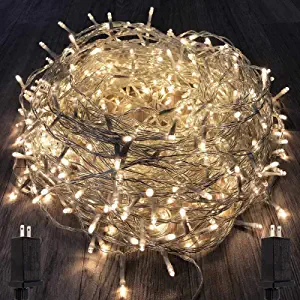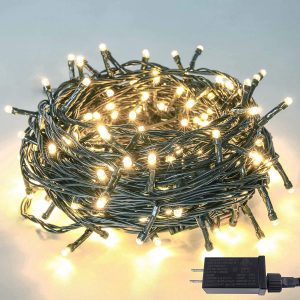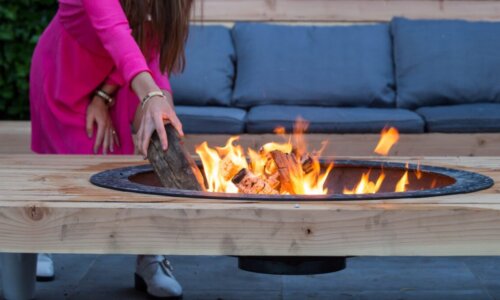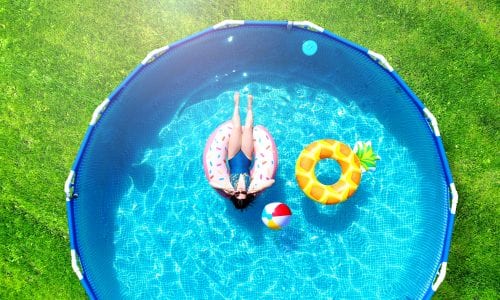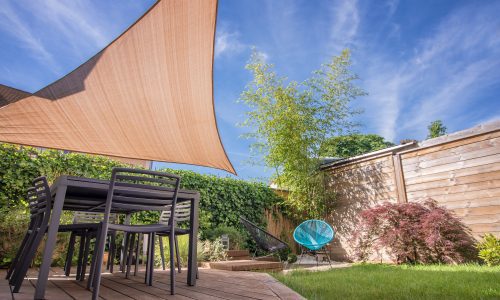The Best Outdoor Lights

Our Review Process
Don't Waste Your Money is focused on helping you make the best purchasing decision. Our team of experts spends hundreds of hours analyzing, testing, and researching products so you don't have to. Learn more.
Our Picks For The Top Outdoor Lights
These outdoor lights have eight different mode options. They are ideal for different occasions such as festivals and holidays. The lights shine brightly and are waterproof.
Several OptionsThese outdoor lights have eight different modes.
These outdoor LED lights are highly safe and won't overheat. They are waterproof and fully sealed. The lights have several different lighting modes.
Safe to UseThese outdoor lights are low-voltage and won’t overheat.
These outdoor lights are incredibly bright with a 360-degree viewing angle, which means that they illuminate in every direction. The lights are highly efficient.
A Brilliant GlowThese outdoor lights have bright LED lightbulbs.
Create some festive cheer with these outdoor lights. They are ideal for use as holiday decorations. The lights have eight different modes.
Festive and CheerfulThese outdoor lights are ideal for the holidays.
Buying Guide
Outdoor lighting is both functional and decorative. It can be used to illuminate dark corners around your home’s exterior or create a whimsical aesthetic. There are many types of outdoor lights available, and choosing the right kind of lights is a matter of determining your needs, outdoor space and ideal use.
Ceiling outdoor lights are overhead lights that have a fixed radius and shine light from above. They are best for enclosed outdoor spaces such as patios and pergolas with a ceiling. These types of lights create a well-lit and dramatic look that is perfect for both intimate and large gatherings. While ceiling lights go on a horizontal surface, wall lighting goes on a vertical one. They illuminate spaces such as walkways and entryways. Wall lighting often has a unique aesthetic such as a farmhouse style or modernist style.
Other options include post lights, which are lights that are mounted on railings, fences or posts. They can be used around walkways or paths where there are not many options for mounting lighting fixtures. Post lights can be mounted high up on tall posts so they cast a wide ray of light. Shorter posts provide visibility closer to the ground. Many types of post lights are powered by solar energy instead of electricity.
If you have beautiful gardens around your space, you may want to highlight the flowers, shrubs and trees with landscape lighting. These are also great for illuminating fountains and sculptures. Landscape lights can be mounted on posts or can be low-profile and close to the ground.
Flood lights are perfect for increasing security around your property as they shine a wide, bright beam of light in a specific direction. They can be set on a motion sensor so they are only triggered when there is some kind of movement in the space.
Another option is to string up some rope lights, which are small bulbs strung together on a rope-like fixture. These lights offer flexibility as you can conform the rope into different configurations, such as wrapped around a fence post or hung in a pattern along an exterior wall. Rope lights can be a permanent or temporary fixture.
What to Look For
- When deciding on which kind of outdoor lights to get, it’s best to first look at the space you are trying to illuminate both in the daytime and in the dark. During the daytime, consider which areas of the space you want to light up. For example, is there is a walkway that should be lit up for safety reasons or would it be nice to have lighting on your porch so you can sit out there at night? When it is dark, take a look at what you can and cannot see as compared to the daytime. This will help you determine what kind of light you will need and where it should be installed.
- If you want to be energy-efficient, consider putting outdoor lights on a motion sensor. This way, the lights will not be on all the time — only when the sensors detect some movement in a certain area. This is ideal for lights that are used for safety purposes.
- Some outdoor lights are available in different colors and shades, which can change the mood of the space you’re illuminating. For example, lights with a yellow glow seem warmer than lights with a blue hue.
More to Explore
How will you power your outdoor lighting? This is an important question to think about as you make your purchasing decisions.
Low voltage power is an energy-efficient option that is easy to install and safe to use. High-voltage power is 120 volts and requires proper installation, which can be labor-intensive. It also has higher operating costs than low-voltage power.
Solar power is a third option for powering outdoor lights. Keep in mind that solar-powered lights require several hours of sunlight during the day to recharge and operate at night. Be sure to check what kind of power is required for the lights you’re interested in using.



